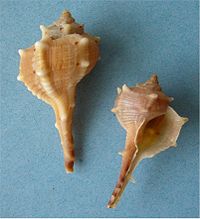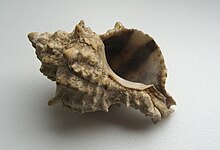- Home
- Beginners
- Certified Divers
- Prices & Offers
- Kalymnos holidays
- Dive Sites
- Dive sites explored by our personell
- Amphoras garden
- Dolphins bay
- Emma's reef
- Gefyra shore
- Kalymnos Diving Park
- Labyrinth of Telendos
- Melitsacha shore
- Natura 2000
- Natural Aquarium
- Panormitis wreck
- Platy Gialos shore
- Queen of Telendos
- Shrimps cave
- Sponge farm
- Sunken City
- Thor Star Wreck
- Vlichadia shore
- Volcano
- Vouros philoxenia
- Wooden shipwreck
- GRIGORIS MOUZOURAKIS
- Habitats (reefs, caverns, caves, canyons, walls)
- STAVROS VALSAMIDIS
- Underwater Fauna and Flora of Kalymnos Island
- Videos from our dives on Kalymnos Island
- Dive sites explored by our personell
Imperial purple and sacred blue.
Once upon a time, among all the colors, 2 were the most valuable.
The Imperial purple and the sacred blue.
These colors were so valuable that you had to pay their weight in gold to buy them.
Both dyes extracted from sea snails known as Murex. Lots of people had to work hard to produce these dyes. While a whole nation (Phoenecians) became rich and famous for selling them.
Imperial purple.
This is also known as Royal purple, Tyrian purple, Tyrian red, porfyra (πορφύρα) in Greek and purpura in Latin.
The dye was a symbol of power at least since 3.500 BC. It was so expensive that only kings, emperors, popes and cardinals could afford it. As estimated, 12.000 snails needed to extract only 1,5 gramms of dye.
A myth says that the purple dye was first discovered by Heracles. Or rather, by his dog, whose mouth stained purple from chewing on snails along the coast of the Levant.
Its production discontinued when Muslims conquered the Byzantine empire. The know how is now lost. But anyone will show you the right sea snail if you ask about porfyra.
Tekhelet - the sacred color of Hebrews.
Tekhelet (Hebrew: תכלת təḵêleṯ, "blue-violet", or "blue", or "turquoise" is a blue dye mentioned in the Hebrew Bible/Tanakh.
In the Septuagint, tekhelet translated into Greek as hyakinthos (ὑακίνθος, "hyacinth").
Used in the clothing of the High Priest, the tapestries in the Tabernacle, and the tassels (Tzitzit). Such as the Tallit (garment worn during prayer, usually).
Sources and more reading
- Tyrian purple: https://en.wikipedia.org/wiki/Tyrian_purple
- Ermiononi's famous purple and technology:
- Tekhelet: https://en.wikipedia.org/wiki/Tekhelet
- Tyrian purple and Tekhelet (pdf): https://www.kremer-pigmente.com/media/pdf/36010e.pdf
Tyrian purple
#66023c
Tyrian red
#960024
Tekhelet
#576E9A
- 7203 reads
Visit our website for more information: kalymnosdiving.gr
 Our facebook page with daily cativity and photos: facebook.com/kalymnosdiving
Our facebook page with daily cativity and photos: facebook.com/kalymnosdiving
Contact us

+30 6973015550 ☎
Mikes Reissis, Owner & Managing Instructor, Reservations

+30 6947604120 ☎
Nikolas Reissis, Information
Find us
About us
Kalymnos Island
Kalymnos is an unspoiled picturesque Greek island. Located between Kos Island and Leros Island in the Aegean sea, Greece.
KALYMNOS Diving Center
We are an authorized PADI 5 Star Dive Resort. The only one on the island. Pioneer since 2008.
With individual care and attention, we offer:
Recreational scuba diving and PADI training for beginners and for certified divers.
We offer Free PADI eLearning for all courses.
- Register now directly with PADI.
- Or read more about our Free PADI eLearning.









